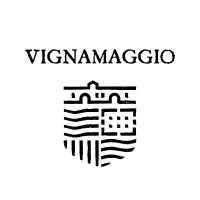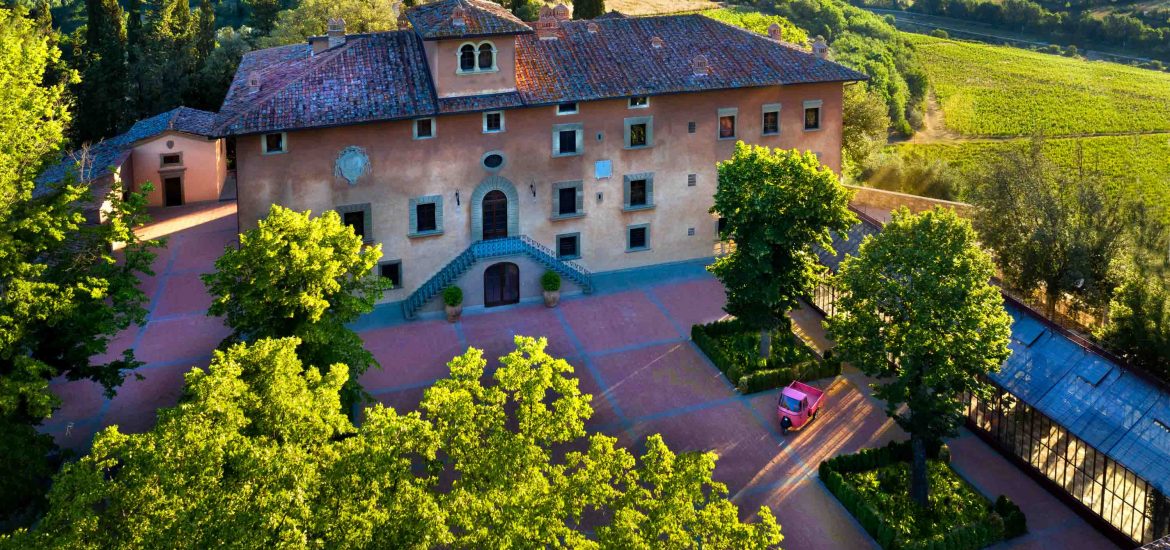For 500 years the fortunes of Vitigliano were entwined with the remarkable men of Tuscany. A great explorer, a larger than life nobleman, a shrewd and visionary newspaper proprietor – these were the Florentines that shaped not only the fortunes of this proud estate but Florence’s place at the heart of Italian culture and public life. The gorgeous house and its lands quietly slipped into neglect in years after the Second World war, before being reawakened from their slumber as Il Borgo di Vignamaggio in the 21st century.
From Chianti to New York Bay: Giovanni da Verrazzano
The tale begins in the 14th century, when these rich farmlands and their majestic manor belonged to one of Tuscany’s most illustrious families, the da Verrazzano. They built their wealth through their estates in the Val di Greve and held high office in the Florentine republic.
Their most illustrious son, Giovanni da Verrazzano (1485-1528), an explorer and navigator, discovered the bay on which New York would later be built. Overshadowed by other explorers at the time, da Verrazzano was finally honoured in the 20th century by the naming of the Verrazzano-Narrows bridge connecting Staten Island and Brooklyn in New York.

An archetypal Renaissance man, full of curiosity for the outside world, and for arts and sciences, Giovanni da Verrazzano was educated in Florence which was a world centre for geographical and navigational knowledge. Giovanni may have spent his days in the olive orchards and shady woods at Vitigliano playing with his much-loved younger brother, Girolamo, before being sent for rigorous schooling in the city. The two brothers would remain close, with Girolamo, who became a cartographer, accompanying his older brother on his expeditions to the new world.
In 1522, Giovanni entered the service of Francis I of France, who appointed him navigator and began to discuss an expedition to the newly-discovered land of America in search of a sea route from the Atlantic to the Pacific Ocean.
Funding for the expedition was needed, and Florentine bankers, so often the patrons of cultural and humanist advances of the time, once more provided. By happy coincidence, the Florentine Gondi family was one of the wealthiest families of Florence and had interests and influence that stretched far and wide. The family exported Florentine fabrics to France, and one of its sons, Antonio II di Gondi, had established himself there. By the 1520s he had acquired a large property in Lyon and had become a banker to the court of Francis I.
Approached by da Verrazzano, Antonio Gondi set about raising the immense sum. The Gondi family provided almost a quarter of it themselves, raising the rest from the bank they owned and from their extensive contacts. As a sign of his gratitude, Verrazzano would name one of the small islands he discovered off the North American coast Pietra Viva, after Antonio’s wife, Marie Catherine de Pierrevive.
Despite the loss of three out of the four ships he took to America, da Verrazzano reached the North Carolina coast in March 1523, and continued north, encountering Native American tribes including the Lenape, the Wampanoag and Narrangasett, and sailing as far as Newfoundland. His many letters back to Francis I vividly describe the splendid feathered garments they wore and the wonders of American flora and fauna.
Giovanni returned to France, but quickly set off again for new shores. The man who was proud to call himself ‘a true Florentine’ never made it back to his beloved Val di Greve. Girolamo, who accompanied his brother on his last, fateful journey, writes of seeing his brother killed and eaten by cannibals in Guadeloupe.
Story of a Marquis and a football team
Generations of the da Verrazzano family followed, but Vitigliano waited 400 years for another Renaissance man to put its name in the history books again. Marchese Luigi Ridolfi Vaj da Verrazzano, a distant relative to Giovanni, was born in 1895 and inherited the estates from his father in 1925.
In 1928 he set up the Societa’ Anonima Toscana Immobiliare Agricola to handle the plentiful produce – olive oil, wine, wheat – that came from his estates of Vitigliano and Castello di Verrazzano and on which his fortune rested.
Interested in politics, sport, art, a decorated World War I hero, the Marchese (Marquis), like his illustrious forebear, was a man fascinated by the new.
A striking figure almost 6ft tall (impressive for the time!), with piercing blue eyes, movie-star features and the charm and swagger of a decorated war veteran, the Marchese had a passion for sport and for art and design. It was natural that he was impressed by the Futurist movement which flourished in Italy in the 1920s and 1930s, and he counted artists, poets and musicians among his friends.
In this period after the Great War, Futurism described a new world, which celebrated speed, technology, clean lines and the power of human achievement. The Marchese, an ardent Florentine and a sporting fanatic, found the ideal outlet for his cultural and sporting passions; in 1926 he founded the Associazione Calcio Fiorentina to revitalise the city’s football fortunes and take Fiorentina, the city’s club, to the top of the national game. The Marchese’s patronage – which extended even to details such as redesigning the team’s symbol, the Florentine Fleur de Lys, to make it more modern and dynamic – launched Fiorentina into the big league.
Ridolfi wanted his team to play in surroundings befitting their importance as Florence’s champions and, at his own expense, commissioned a new stadium from a rising young architect, Pierluigi Nervi, to host their home matches. It was hailed as a modern masterpiece and Nervi went on to become world-famous.
The Marchese was never a man to stand still, however. As building work continued, he still found time in 1933 to co-found the Maggio Musicale Fiorentino music festival, which runs to this day.
Ridolfi flirted with fascism and led Italy’s delegation to the Berlin Olympics in 1936. But ultimately he was more interested in sport than ideology. Unfortunately his vision for Fiorentina ultimately cost him his family home. To pay for the new stadium, he had raised funds against his estate of Vitigliano from fellow-Florentine, Egidio Favi, a colossus among Italian newspaper proprietors. In 1936 Ridolfi realised there was no way he could repay the debt and broken-heartedly ceded Vitigliano to Favi.
The Favi era
The owner/editor of La Nazione was another ‘super Tuscan’. The first edition of La Nazione had rolled off the presses in central Florence in 1859, as Italian unification began; so it was that the paper and the new country were almost born together. The Florence that gave birth to La Nazione was still the small, walled city of Renaissance times, but, just like then, the city was a melting pot of political and cultural ideas, uniquely curious about the outside world. In 1915, when Favi took over the paper, he turned it into one of Italy’s most successful national broadsheets – while retaining news from Florence and surrounding areas. Favi made his paper a place where international news and ideas mingled with issues important to Florence, just as had happened in Renaissance times, where merchants, artists and travellers brought news of the outside world to the city.
Favi presided over a golden time at La Nazione, before the strains of surviving under Mussolini’s dictatorship and World War II almost killed off the newspaper.
Fighting raged around Florence, and most of La Nazione’s printing presses were destroyed by the end of the war. Nor was the surrounding countryside spared. During the renovation works at Borgo di Vignamaggio, rooms in the palazzo were found to have graffiti from soldiers and prisoners cut into the plaster, and elderly locals can still remember the terrible destruction wrought by the fighting.

The Sleeping Beauty
Battered by the war, the palazzo faded like a bruised beauty in the hard years that followed. Favi plunged his remaining energy into rebuilding La Nazione and died in 1948, mourned by the whole of Florence.
With his death, the palazzo became a true Sleeping Beauty. Vegetation grew up, and the grand house, with its chapel, magnificent frescoes and outbuildings, fell into a decline that lasted until 2017 when the owners of Vignamaggio, the grand palazzo across the valley, decided to reawaken the Sleeping Beauty and make her the home of the ultimate romantic dream – the perfect wedding.
Find out more about Il Borgo areas and services


